What Is Panchakarma?
Note: Friends, if you are comfortable in reading this article in any other language, please change the language from the translate button at the top of this article.
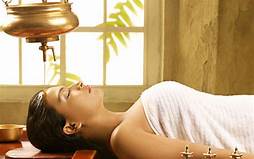 |
| The word "panchakarma" comes from two Sanskrit words: "Pancha," which means "five," and "karma," which means "actions" |
Overview
Panchakarma is a traditional Ayurvedic therapy that involves a series of detoxification and rejuvenation treatments.
The word "panchakarma" comes from two Sanskrit words: "Pancha," which means "five," and "karma," which means "actions" or "therapies."
The five therapies or actions of panchakarma are:
1. Vamana (emesis therapy)
2. Virechana (purgation therapy)
3. Basti (enema therapy)
4. Nasya (nasal administration)
5. Rakta Mokshana (bloodletting)
Panchakarma is believed to balance the three doshas (Vata, Pitta, and Kapha) and improve overall health and well-being.
It is typically performed under the guidance of a trained Ayurvedic practitioner and can last anywhere from a few days to several weeks depending on the individual's needs and goals.
1. Vamana:
Vamana is a type of Panchakarma therapy that involves inducing controlled vomiting to eliminate toxins and impurities from the body.
The Vamana procedure involves several stages.
First, the patient undergoes a preparatory phase in which they receive a specific diet and herbal preparations to prepare the body for the Vamana therapy.
The preparatory phase usually lasts for several days.
Next, the patient is given a specific formulation of herbs and other substances to induce vomiting. This is typically done in the morning on an empty stomach.
The practitioner carefully monitors the patient during the vomiting process to ensure that it is safe and effective.
After the vomiting process is complete, the patient is given a specific diet and herbal preparations to help them recover and rejuvenate.
This phase usually lasts for several days and is designed to promote the elimination of toxins and impurities from the body.
2. Virechana
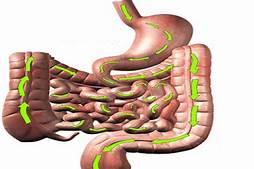 |
| Virechana involves inducing controlled purgation to eliminate toxins and impurities from the body |
Virechana is a type of Panchakarma therapy that involves inducing controlled purgation to eliminate toxins and impurities from the body.
The Virechana procedure involves several stages. First, the patient undergoes a preparatory phase in which they receive a specific diet and herbal preparations to prepare the body for the Virechana therapy.
The preparatory phase usually lasts for several days.
Next, the patient is given a specific formulation of herbs and other substances to induce purgation.
This is typically done in the morning on an empty stomach. The practitioner carefully monitors the patient during the purgation process to ensure that it is safe and effective.
After the purgation process is complete, the patient is given a specific diet and herbal preparations to help them recover and rejuvenate.
This phase usually lasts for several days and is designed to promote the elimination of toxins and impurities from the body.
3. Basti
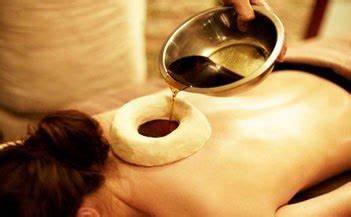 |
| Basti involves administering herbal enemas to eliminate toxins and promote healing in the body |
Basti therapy is a type of Panchakarma therapy that involves administering herbal enemas to eliminate toxins and promote healing in the body.
The Basti therapy procedure involves several stages. First, the patient undergoes a preparatory phase in which they receive a specific diet and herbal preparations to prepare the body for the Basti therapy.
The preparatory phase usually lasts for several days.
Next, the practitioner prepares a specific herbal formulation and administers it through the rectum using a special device called a basti instrument.
The herbal formulation typically consists of medicated oils, ghee, or herbal decoctions. The practitioner carefully monitors the patient during the therapy to ensure that it is safe and effective.
After the therapy, the patient is given a specific diet and herbal preparations to help them recover and rejuvenate.
This phase too usually lasts for several days and is designed to promote the elimination of toxins and impurities from the body.
Basti therapy is typically used to treat a variety of health concerns, including digestive disorders, menstrual disorders, arthritis, and respiratory problems.
4. Nasya
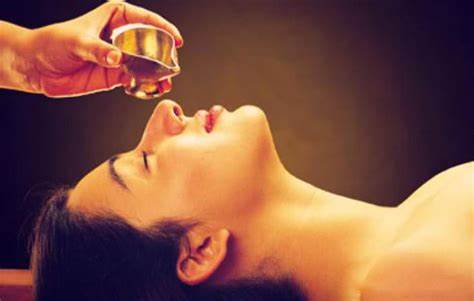 |
| Nasya involves the administration of medicated oils or herbal formulations through the nasal passages |
Nasya is a type of Panchakarma therapy that involves the administration of medicated oils or herbal formulations through the nasal passages.
The Nasya procedure involves several stages. First, the patient undergoes a preparatory phase in which they receive a specific diet and herbal preparations to prepare the body for the Nasya therapy.
The preparatory phase usually lasts for several days.
Next, the practitioner prepares a specific herbal formulation and administers it through the nasal passages using a special device.
The herbal formulation typically consists of medicated oils, ghee, or herbal decoctions. The practitioner carefully monitors the patient during the therapy to ensure that it is safe and effective.
After the therapy, the patient may be advised to avoid exposure to cold or wind, and to rest for a period of time. This phase usually lasts for several days.
Nasya therapy is typically used to treat a variety of health concerns, including respiratory problems, headaches, sinusitis, and neurological disorders.
5. Rakta Mokshana
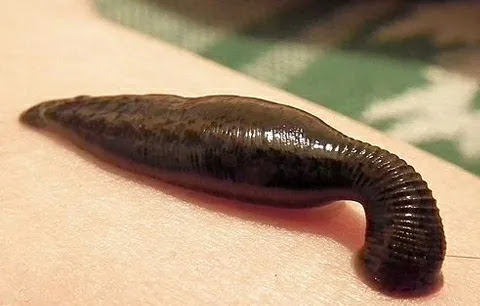 |
| Rakta Mokshana therapy involves the removal of impure blood from the body |
Rakta Mokshana is a type of Panchakarma therapy that involves the removal of impure blood from the body.
The Rakta Mokshana procedure involves several stages. First, the patient undergoes a preparatory phase in which they receive a specific diet and herbal preparations to prepare the body for the therapy.
The preparatory phase usually lasts for several days.
Next, the practitioner identifies the specific site where the impure blood needs to be removed. This can be done using a variety of methods, including leech therapy, cupping, or venesection (the removal of blood using a needle).
After the therapy, the patient may be advised to rest and avoid strenuous activity for a period of time.
This phase usually lasts for several days and is designed to promote the elimination of toxins and impurities from the body.
Rakta Mokshana therapy is typically used to treat a variety of health concerns, including skin disorders, gout, and hypertension.
Our Other Must-Read Articles:
Health Benefits of Panchakarma
Panchakarma is believed to offer several benefits for the mind and body. Here are some of the potential benefits of panchakarma:
Detoxification:
Panchakarma helps to eliminate toxins and impurities from the body, promoting overall health and well-being.
Improved digestion:
Panchakarma therapies can help to balance the digestive system and improve digestion.
Reduced stress:
Panchakarma therapies such as abhyanga (oil massage) and shirodhara (pouring of warm oil on the forehead) can help to reduce stress and promote relaxation.
Improved sleep:
Panchakarma can help to improve sleep quality and quantity, allowing for better rest and rejuvenation.
Panchakarma can help to boost the immune system, helping the body to fight off illness and disease.
Reduced inflammation:
Panchakarma therapies can help to reduce inflammation throughout the body, which may help to alleviate pain and discomfort.
Improved mental clarity:
Panchakarma therapies can help to clear the mind and promote mental clarity, improving focus and concentration.
Rejuvenation:
Panchakarma can help to restore the body's natural balance and promote overall rejuvenation and vitality.
Improved skin health:
Panchakarma can help to improve the health and appearance of the skin, promoting a healthy glow and reducing the signs of aging.
Weight loss:
Panchakarma can help to promote weight loss by improving digestion, reducing inflammation, and eliminating toxins from the body.
Hormonal balance:
Panchakarma can help to balance hormones, which may be beneficial for conditions such as PCOS (polycystic ovary syndrome) and menopause.
Improved respiratory health:
Panchakarma therapies such as nasya (nasal administration) can help to improve respiratory health by reducing congestion and promoting healthy breathing.
Improved cardiovascular health:
Panchakarma can help to improve cardiovascular health by reducing inflammation, improving circulation, and lowering blood pressure.
Improved fertility:
Panchakarma can help to improve fertility by balancing hormones and promoting overall reproductive health.
Improved energy levels:
Panchakarma can help to increase energy levels and reduce feelings of fatigue, promoting overall vitality and well-being.
Can We Do Panchakarma At Home?
Panchakarma is a highly specialized Ayurvedic therapy that involves a series of detoxification and rejuvenation treatments, and it is typically performed under the guidance of a qualified Ayurvedic practitioner.
While there are some components of panchakarma that can be done at home, such as self-massage and herbal treatments, it is not recommended to attempt a full panchakarma regimen at home without professional guidance.
A panchakarma program typically involves several weeks of preparation, specialized diets, and daily treatments that are tailored to an individual's specific needs and constitution.
Without the guidance of a qualified practitioner, it can be difficult to know which treatments are appropriate and how to properly administer them.
In addition, panchakarma involves the use of potent herbs, oils, and other substances, which can be harmful if used improperly.
If you are interested in trying panchakarma, it's best to consult with a qualified Ayurvedic practitioner who can evaluate your individual needs and goals and develop a personalized treatment plan that is safe and effective.
The practitioner can also provide guidance and support throughout the entire process to ensure that you receive the maximum benefits of panchakarma.
Who Should Not Undergo Panchakarma Treatment?
While Panchakarma therapy can be highly beneficial for many people, there are certain individuals who should not undergo this treatment. These include:
Pregnant women -
Panchakarma therapies are generally not recommended for pregnant women as they can be too intense and may cause complications.
People with acute infections or illnesses -
Panchakarma therapies are intended to strengthen the body's natural healing mechanisms.
If you are currently experiencing an acute infection or illness, your body may not be strong enough to handle the additional stress of Panchakarma therapies.
People with certain medical conditions -
People with certain medical conditions, such as cancer or heart disease, may not be good candidates for Panchakarma therapy.
It is important to consult with your doctor or an Ayurvedic practitioner before undergoing Panchakarma if you have any underlying medical conditions.
People who are very weak or debilitated -
Panchakarma therapies can be quite intense and may not be appropriate for individuals who are very weak or debilitated.
People with certain psychological conditions -
People with certain psychological conditions, such as severe anxiety or depression, may not be good candidates for Panchakarma therapy.
People with a weakened immune system -
Panchakarma therapies can be physically demanding and may weaken the immune system.
For individuals with a weakened immune system, undergoing Panchakarma therapy may increase the risk of infection and other complications.
People with certain allergies -
Some Panchakarma therapies involve the use of herbal preparations or oils that may cause an allergic reaction in some individuals.
If you have a known allergy to any of the ingredients used in Panchakarma therapy, it is important to discuss this with your practitioner before undergoing treatment.
People with a history of substance abuse -
Panchakarma therapies can be physically and emotionally challenging, and may not be appropriate for individuals with a history of substance abuse or addiction.
People with a history of eating disorders -
Panchakarma therapies typically involve a restricted diet and fasting, which may trigger or exacerbate eating disorders in some individuals.
People with a history of trauma -
Panchakarma therapies can be emotionally intense and may not be appropriate for individuals with a history of trauma or PTSD.
It is important to discuss your individual health history and concerns with a qualified Ayurvedic practitioner before undergoing any type of Panchakarma therapy to determine if it is appropriate and safe for you.
Frequently Asked Questions on Panchakarma
Here are some frequently asked questions about Panchakarma and their answers:
Q: What is the duration of Panchakarma therapy?
A: The duration of Panchakarma therapy can vary depending on the individual's needs and goals.
Generally, Panchakarma therapy can last anywhere from several days to several weeks.
Q: Can Panchakarma therapy be done at home?
A: While there are some Panchakarma therapies that can be done at home, such as dietary and lifestyle changes, many of the therapies require the guidance of a qualified Ayurvedic practitioner and should not be attempted at home.
Q: Is Panchakarma therapy painful?
A: Panchakarma therapy should not be painful. However, some of the therapies may be uncomfortable or may cause mild side effects, such as fatigue or nausea.
Q: Can Panchakarma therapy be done while on medication?
A: It is important to consult with a qualified Ayurvedic practitioner before undergoing Panchakarma therapy while on medication.
Some medications may interfere with the effectiveness of the therapy or may interact with the herbs and oils used in the therapy.
Q: Is Panchakarma therapy safe?
A: When done by a qualified Ayurvedic practitioner, Panchakarma therapy is generally safe. However, as with any medical treatment, there are some risks involved.
It is important to discuss your individual health history and concerns with your practitioner before undergoing Panchakarma therapy.
Q: Can Panchakarma therapy be done during menstruation?
A: Some Panchakarma therapies, such as Vamana and Virechana, should not be done during menstruation.
However, other therapies, such as Nasya and Basti, may be done during menstruation.
Q: Is Panchakarma therapy effective?
A: Panchakarma therapy can be highly effective in promoting overall health and wellness. However, the effectiveness of the therapy will depend on the individual's needs and goals, as well as the skill and experience of the practitioner.
It is important to work with a qualified Ayurvedic practitioner who can develop a personalized treatment plan that is tailored to your needs.
Q: What is the difference between Panchakarma therapy and spa treatment?
A: While both Panchakarma therapy and spa treatments involve relaxation and rejuvenation, there are some key differences.
Panchakarma therapy is a holistic approach to healthcare that involves a variety of therapies and treatments, such as dietary changes and cleansing procedures, with the goal of promoting overall health and wellness.
Spa treatments, on the other hand, are primarily focused on relaxation and aesthetic benefits, such as massage, facials, and body treatments.
Q: How often should I undergo Panchakarma therapy?
A: The frequency of Panchakarma therapy will depend on your individual needs and goals. Some people may benefit from undergoing Panchakarma therapy once or twice a year, while others may need more frequent treatment.
Q: Can Panchakarma therapy help with specific health conditions?
A: Panchakarma therapy can be beneficial for a wide range of health conditions, including digestive disorders, respiratory problems, hormonal imbalances, and chronic pain.
Q: Is Panchakarma therapy covered by insurance?
A: Panchakarma therapy is not typically covered by insurance, as it is considered an alternative or complementary therapy.
However, it is important to check with your insurance provider to determine if any coverage is available.
Friends, Stay Fit, Stay Happy
----------------------------------------------------------------------------
Friends, if you liked it, please share it with your friends.
SHARING IS CARING.
Compiled by: Paramjit Singh Rana

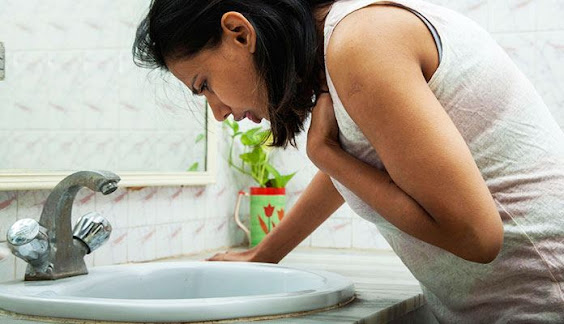
Comments
Post a Comment